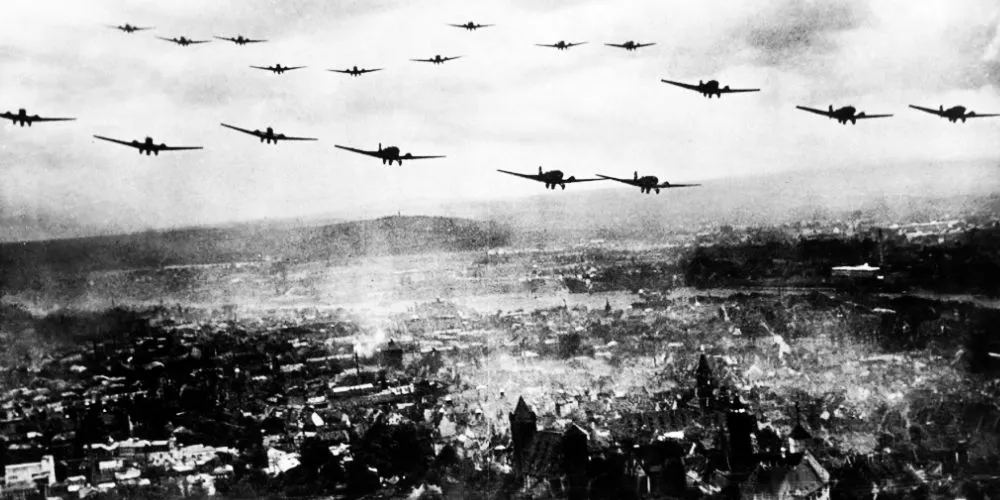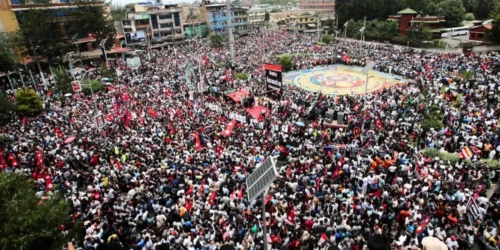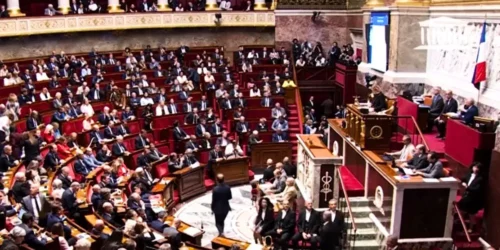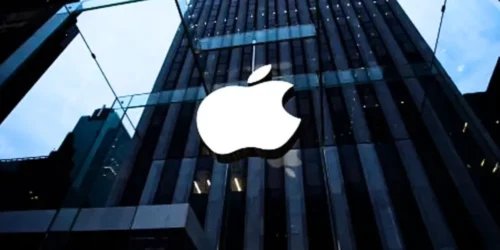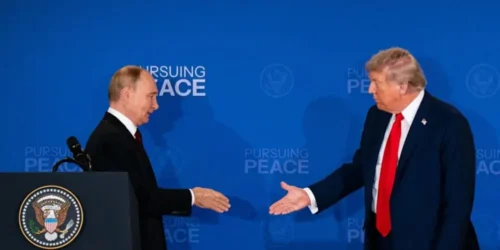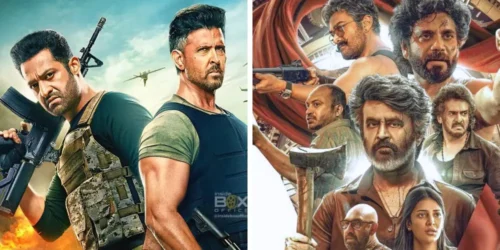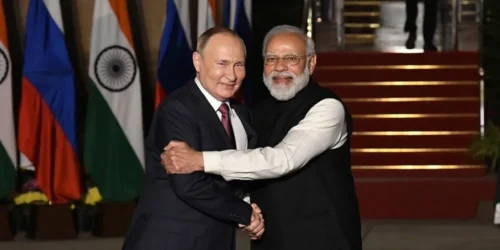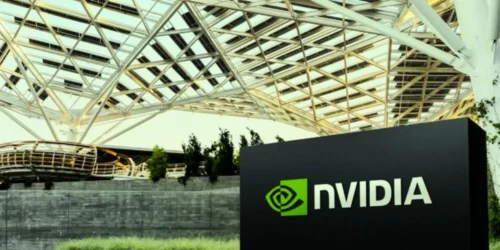History does not simply happen. It is forged. It is the product of pressure, heat, and violent collision, a chain reaction of human decisions, flawed ideologies, and inexorable forces. Of all the crucibles that have shaped our modern world, none burns hotter or casts a longer shadow than World War II. To call it a mere “war” feels inadequate. It was a global cataclysm, a six-year convulsion that consumed continents, erased entire cities, and fundamentally re-engineered the human experience. It was a conflict so total that it reached from the halls of power to the most humble kitchen, demanding sacrifice and complicity from nearly everyone alive.
This is not just a retelling of dates and battles. This is a case study of humanity pushed to its absolute extremes. We will dissect the war not as a monolithic event but as a series of interconnected crises: a crisis of diplomacy, a crisis of ideology, a crisis of technology, and, ultimately, a profound crisis of morality. We will explore how the unresolved trauma of one great war sowed the seeds for an even greater one, how societies mobilized for destruction on an industrial scale, and how, from the deepest abyss of human cruelty, a new world order—flawed, fragile, yet forever changed—struggled to emerge. To understand World War II is to understand the 20th century and, in doing so, to hold a mirror up to the enduring capacities for both creation and annihilation that define us today.
The Unquiet Grave – Forging the Tools of Destruction
A fire of this magnitude requires fuel, kindling, and a spark. The fuel for World War II had been piling up for two decades, a toxic combination of national humiliation, economic desperation, and ideological fervor. The world of the 1920s and 1930s was not a world at peace; it was a world holding its breath, waiting for the next catastrophe to unfold.
The Ghost of Versailles
The story begins, as it must, in the Hall of Mirrors at Versailles in 1919. The treaty that ended the “war to end all wars” did not achieve its intended purpose. The victorious powers, led by France, Britain, and the United States, imposed a peace on a defeated Germany that was punitive in spirit and crippling in practice. The infamous Article 231, known as the “War Guilt Clause,” compelled Germany to accept sole responsibility for the devastation of World War I. This was more than a political statement; it was a profound national shaming. On top of this psychological blow came staggering economic reparations, territorial losses that stripped the nation of industrial heartlands, and severe restrictions on its military.
For the fledgling Weimar Republic, Germany’s first real experiment with democracy, the treaty was a millstone. From its birth, the government was associated with defeat and humiliation. Throughout the 1920s, as Germany grappled with hyperinflation that saw citizens carrying wheelbarrows of worthless cash just to buy a loaf of bread, extremist voices on the right found a ready audience. They peddled a powerful and poisonous narrative: that Germany had not been defeated on the battlefield but had been “stabbed in the back” by internal enemies—Jews, socialists, and weak-kneed politicians. The Treaty of Versailles was not a foundation for peace; it was a festering wound, and from that wound grew the gangrenous politics of resentment.
The Great Depression: An Ideological Accelerant
If Versailles provided the narrative of grievance, the Great Depression of 1929 provided the desperation. When the American stock market crashed, it sent a tidal wave of economic ruin across the globe. International trade seized up. Banks collapsed. In Germany, a nation precariously propped up by American loans, the effect was catastrophic. By 1932, unemployment soared past six million. People lost their savings, their homes, their hope.
In times of stability and prosperity, democratic institutions thrive. In times of chaos and fear, people search for saviors and scapegoats. The political center could not hold. In Italy, Benito Mussolini’s Fascist party, with its intoxicating blend of nationalism, militarism, and charismatic pageantry, had already seized power in the 1920s, promising to restore Roman glory. In Japan, a powerful military faction, convinced of Japan’s divine destiny to dominate Asia, increasingly controlled the government, viewing territorial expansion as the only solution to its limited natural resources.
And in Germany, the hour of Adolf Hitler and the National Socialist (Nazi) Party had arrived. Hitler was a master of political theater and a virtuoso of hate. He gave the German people simple answers to complex problems. Who was to blame for their suffering? The “November criminals” who signed the Treaty of Versailles. The international Jewish conspiracy that, he claimed, controlled global finance. The communists threatened German tradition. What was the solution? A powerful, racially pure German state—a Third Reich—that would reclaim its lost territories, subjugate “inferior” races, and achieve Lebensraum, or “living space,” in Eastern Europe. Millions, desperate for a way out of the abyss, embraced his terrifying vision. In January 1933, the Weimar Republic, a democratic government, came to an end, and Hitler became Chancellor of Germany. The countdown to war had begun in earnest.
The Failure of Appeasement: Paving the Road to War
While these aggressive, expansionist ideologies consolidated power, the Western democracies—Britain and France—were paralyzed by their traumas. The memory of the trenches of World War I, of a generation of young men lost to machine guns and poison gas, was seared into their national consciousness. The public appetite for another major conflict was non-existent. This profound war-weariness gave rise to the policy of appeasement.
Appeasement was not born of cowardice but of a desperate and ultimately naive hope. Leaders like British Prime Minister Neville Chamberlain believed that by making rational concessions to Hitler, they could satisfy his grievances and avert another catastrophic war. They saw Hitler as a conventional statesman, albeit a boorish one, who had legitimate complaints about the injustices of Versailles.
The policy was repeatedly tested, and each time, it failed to work. In 1936, Hitler remilitarized the Rhineland, a direct violation of the treaty. Britain and France protested but took no action. In March 1938, he annexed Austria in the Anschluss (union). Again, the world watched. The ultimate test came in September 1938 over the Sudetenland, a German-speaking region of Czechoslovakia. Hitler demanded its annexation, and Czechoslovakia, a sovereign democracy, prepared to fight.
At the infamous Munich Conference, Britain and France intervened. They pressured the Czechs to surrender the Sudetenland to Germany. Chamberlain returned to London, waving the agreement and famously declaring he had secured “peace for our time.” He had done nothing of the kind. He had shown Hitler that the West lacked the will to fight. Winston Churchill, then a lonely voice in the political wilderness, saw the truth with chilling clarity. “You were given the choice between war and dishonor,” he told Chamberlain. “You chose dishonor, and you will have war.”
Churchill was right. In March 1939, Hitler, emboldened and contemptuous, broke his Munich promise and swallowed the rest of Czechoslovakia. The policy of appeasement was dead. The Western powers finally understood that Hitler’s ambition was not limited to righting the wrongs of Versailles; it was limitless. When Hitler signed a shocking non-aggression pact with his ideological arch-nemesis, Joseph Stalin’s Soviet Union, in August 1939, the final piece was in place. The pact secretly carved up Poland between them, neutralizing Hitler’s eastern flank and giving him the green light to attack. On September 1, 1939, German tanks rolled across the Polish border. This time, there would be no more concessions. Britain and France issued an ultimatum. When it expired, the world was once again at war.
The Anatomy of Total War
The war that erupted in 1939 was unlike any conflict that had come before. World War I had been a static, grinding war of attrition fought in trenches. World War II was a war of movement, ideology, and technology—a “total war” that blurred the lines between soldier and civilian and turned entire nations into cogs in a vast, global war machine.
The Blitzkrieg Revolution
The initial phase of the war in Europe was defined by a terrifying new German military doctrine: Blitzkrieg, or “lightning war.” It was a symphony of violence, with fast-moving Panzer tank divisions, dive-bombers (the dreaded Stuka), and motorized infantry coordinating to smash through enemy lines, bypass strongpoints, and sow chaos deep in the enemy’s rear. It was a psychological as much as a physical weapon designed to induce shock and paralysis.
Poland fell in a matter of weeks. After a period of quiet on the Western Front known as the “Phoney War,” Hitler unleashed the Blitzkrieg on Western Europe in the spring of 1940. Denmark and Norway fell quickly. Then, in May, German forces bypassed the heavily fortified Maginot Line by striking through the supposedly impassable Ardennes Forest. They burst into France, trapping the British Expeditionary Force and French armies on the beaches of Dunkirk. The heroic evacuation of over 338,000 Allied soldiers from Dunkirk was a miracle of improvisation, but it was a retreat, not a victory. By late June 1940, France, considered to have one of the world’s most powerful armies, had surrendered. Hitler stood for a photo in front of the Eiffel Tower. Britain now stood alone.
The Battle of Britain fought in the skies over southern England in the summer and fall of 1940, was a pivotal turning point. The German Luftwaffe aimed to achieve air superiority as a precursor to invasion. But the Royal Air Force (RAF), aided by the crucial new technology of radar and fighting with desperate courage, held them off. As Churchill so memorably said of the RAF pilots, “Never in the field of human conflict was so much owed by so many to so few.” The failure to defeat the RAF forced Hitler to indefinitely postpone the invasion of Britain.
A War on Three Fronts
The conflict was a truly global affair, fought with savage intensity across vastly different theaters.
The Eastern Front: The Ideological Grinder
For Hitler, the war against the Soviet Union, which he launched with Operation Barbarossa in June 1941, was the real war. It was not a conventional military campaign; it was a war of annihilation, a racial and ideological crusade to destroy “Judeo-Bolshevism” and seize Lebensraum. The scale was staggering. Over three million German soldiers surged eastward along a 1,800-mile front. Initially, the Blitzkrieg worked its magic again. Soviet armies were encircled and destroyed, and millions of prisoners were taken, most of whom were deliberately starved to death in German camps. The German advance reached the outskirts of Moscow.
But the Soviet Union was not France. It had vast distances, a brutal winter, and a seemingly limitless supply of manpower. Stalin, though caught by surprise, rallied his people with appeals to Russian patriotism. He moved entire industries east of the Ural Mountains, beyond the reach of German bombers. The war on the Eastern Front descended into a level of barbarity unseen in modern warfare. Both sides fought with fanatical determination and practiced a scorched-earth policy. The turning point came at Stalingrad. From August 1942 to February 1943, the German Sixth Army and the Soviet Red Army fought a hellish, street-by-street battle for the city. The Germans were eventually surrounded and annihilated. Stalingrad was more than a military defeat; it was a psychological catastrophe for the Third Reich. From that point on, the massive, revitalized Red Army began its relentless, bloody push toward Berlin.
The Pacific Theater: A War of Water and Fire
While Europe burned, another storm was gathering in the Pacific. Imperial Japan, pursuing its vision of a “Greater East Asia Co-Prosperity Sphere” (a euphemism for a Japanese empire), had been at war with China since 1937. To fuel its war machine, Japan needed oil, rubber, and other resources from Southeast Asia, resources controlled by European colonial powers and the United States. When the U.S. imposed a crippling oil embargo to protest Japanese aggression, Japan’s leaders saw a choice: either abandon their imperial ambitions or go to war with America.
They chose war. On December 7, 1941, Japanese carrier aircraft executed a surprise attack on the U.S. Pacific Fleet at Pearl Harbor, Hawaii. The attack was a brilliant tactical success but a colossal strategic blunder. It shattered American isolationism overnight and united a furious nation behind one goal: the unconditional surrender of Japan. The Pacific War was a naval war, a contest of aircraft carriers and amphibious assaults across vast stretches of ocean. The nature of the fighting was uniquely brutal, characterized by jungle warfare, “no-surrender” doctrines from the Japanese, and a racial animosity that dehumanized the enemy on both sides. Key battles like Midway (where the U.S. Navy sank four Japanese carriers, turning the tide of the war), Guadalcanal, Iwo Jima, and Okinawa became legendary for their ferocity and staggering casualty rates. The strategy of “island hopping” allowed U.S. forces to bypass heavily fortified Japanese islands and steadily advance toward the Japanese mainland.
The Home Front: The Arsenal of Democracy
The war was won not only on the battlefields but also in the factories, farms, and homes of the Allied nations. Entire societies were mobilized. In Britain, people endured the nightly terror of the Blitz, huddled in shelters while German bombs rained down. Food, clothing, and gasoline were strictly rationed. In the Soviet Union, the civilian population suffered unimaginable hardships but continued to produce tanks and artillery under the most grueling conditions.
In the United States, the “home front” became a miracle of production. American industry, emerging from the Great Depression, rapidly converted to war production on a breathtaking scale. Factories that had made cars now churned out tanks and bombers. The U.S. truly became, in President Franklin D. Roosevelt’s words, the “arsenal of democracy,” supplying its forces and its allies with a seemingly endless stream of war material. The war also transformed American society. Millions of women entered the workforce for the first time, personified by the iconic “Rosie the Riveter,” proving they could do “a man’s job” and challenging traditional gender roles forever.
The Technological Crucible
War has always been a powerful accelerant of technology, and World War II was the ultimate catalyst. The conflict spurred a frenzy of innovation that changed the face of warfare and civil life. Radar, a British invention, played a decisive role in the Battle of Britain. Jet aircraft developed by both Germany (the Me 262) and the Allies (the Gloster Meteor) heralded a new age of aviation. Advances in rocketry led to Germany’s V-2, the world’s first ballistic missile, a terrifying weapon that also laid the groundwork for the post-war space race.
In medicine, the mass production of penicillin saved countless lives from infection. In computing, the British effort to break German codes at Bletchley Park, particularly the Enigma cipher, led to the development of Colossus, one of the world’s first programmable electronic computers. This intelligence coup was vital to the Allied victory, shortening the war by an estimated two years.
But the most consequential and terrifying technological development was the atomic bomb. The Manhattan Project, a top-secret U.S. program, brought together the world’s finest physicists to harness the power of nuclear fission. Driven by the fear that Nazi Germany would develop the bomb first, they succeeded. In August 1945, with Germany defeated but Japan still fighting, President Harry Truman made the fateful decision to use the new weapon. The atomic bombs dropped on Hiroshima and Nagasaki instantly obliterated both cities, killing over 200,000 people and forcing Japan’s surrender. The war was over, but humanity had entered a new and terrifying nuclear age.
The Moral Abyss and the Human Spirit
Beyond the clash of armies and the march of technology lies the war’s dark heart: its profound moral dimension. World War II was not just a struggle for territory; it was a battle over the very definition of humanity. It revealed a capacity for systematic evil that stunned the world while also summoning forth extraordinary acts of courage and resilience.
The Holocaust: The Industrialization of Hate
The Holocaust was not a byproduct of the war; for the Nazi regime, it was a central war aim. It was the culmination of centuries of European anti-Semitism, supercharged by the pseudo-scientific racism of Nazi ideology. What made the Holocaust unique was its cold, bureaucratic, industrial-scale efficiency. This was not random mob violence; this was a state-sponsored program of systematic extermination.
The process was gradual. It began in 1933 with discriminatory laws, boycotts, and public humiliation. It escalated with the 1938 Kristallnacht (“Night of Broken Glass”), a state-organized pogrom. With the outbreak of war, the “Jewish question” moved into a new, more horrifying phase. Jews were herded into sealed-off ghettos in Polish cities, where they were left to die from starvation and disease.
The “Final Solution” was formalized at the Wannsee Conference in January 1942. The Nazis decided to exterminate the entire Jewish population of Europe. They built a network of death camps, such as Auschwitz-Birkenau, Treblinka, and Sobibor, equipped with gas chambers and crematoria. An intricate railway system transported millions of men, women, and children from across Europe to these factories of death. They were told they were being “resettled.” Upon arrival, most were sent directly to their deaths.
In total, the Nazis murdered six million Jews. They also systematically persecuted and murdered millions of others they deemed “undesirable”: Roma (gypsies), homosexuals, Jehovah’s Witnesses, disabled people, and political opponents, as well as millions of Slavic civilians, particularly Poles and Soviets. The Holocaust stands as a stark, eternal warning of where ideologies of hate when combined with the power of a modern state, can lead.
War Crimes and a New Standard of Justice
The atrocities were not confined to the Nazis, though theirs were unparalleled in scope and systematic nature. The Japanese military committed horrific war crimes across Asia and the Pacific. The Rape of Nanking in 1937 saw the slaughter and violation of hundreds of thousands of Chinese civilians. The Bataan Death March in the Philippines forced American and Filipino prisoners of war on a brutal, deadly trek. Japanese “comfort women” systems subjected countless women to sexual slavery.
The Allies, too, made morally fraught decisions. The strategic bombing campaigns against German and Japanese cities, particularly the firebombing of Dresden and Tokyo, were designed to break civilian morale and destroy industrial capacity. These attacks killed hundreds of thousands of civilians and remain a subject of intense ethical debate.
When the war ended, the world faced a new question: how to hold the perpetrators accountable? The answer came in the form of the Nuremberg Trials. For the first time in history, political and military leaders were prosecuted for their actions by an international tribunal. The surviving leaders of the Third Reich were charged with “crimes against peace” (waging aggressive war), “war crimes” (violations of the laws of war), and a new, groundbreaking charge: “crimes against humanity.” The trials established a crucial precedent: that “following orders” is not a valid defense for committing atrocities and that even in wartime, there is a standard of law and morality that applies to all.
Resistance and Resilience
Even in this darkest of times, the human spirit refused to be extinguished. Across occupied Europe, resistance movements rose to fight the Nazi occupiers. In France, the Maquis sabotaged railways and provided intelligence to the Allies. In Yugoslavia, Josip Broz Tito’s partisans tied down hundreds of thousands of German troops. The Polish Home Army launched the tragic, heroic Warsaw Uprising in 1944.
There were also profound acts of individual courage. There were the “Righteous Among the Nations,” non-Jews who risked their lives to hide and save Jews from the Holocaust, people like Oskar Schindler, who saved over a thousand Jews by employing them in his factories, or the Ten Boom family in the Netherlands, who created a secret hiding place in their home. There were moments of incredible defiance, like the Warsaw Ghetto Uprising, where a small, poorly armed group of Jewish fighters held off the powerful German army for nearly a month in a desperate, final act of honor. These stories do not erase the horror, but they stand as a testament to the fact that even when confronted with absolute evil, choice, courage, and compassion remain possible.
The Unquiet Peace – A World Re-Forged
The surrender of Germany in May 1945 and Japan in August 1945 did not bring quiet to the world. The war had acted as a geopolitical earthquake, shattering old structures and creating a new global landscape fraught with dangers. The legacy of World War II is the world we inhabit today.
The Rise of the Superpowers and the Iron Curtain
The war destroyed the old European-centric world order. The great colonial empires of Britain and France were financially broken and morally compromised. Out of the rubble, two new, continent-sized powers emerged with competing ideologies and immense military strength: the capitalist, democratic United States, and the communist, totalitarian Soviet Union.
They had been allies of convenience against a common foe. Once that foe was vanquished, their deep-seated ideological animosity resurfaced. The Soviet Union, having borne the brunt of the war in Europe, established a buffer zone of satellite states in Eastern Europe, imposing communist regimes and cutting the region off from the West. In 1946, Winston Churchill, in a speech in Missouri, gave this new reality a name: an “Iron Curtain” had descended across the continent. The stage was set for the Cold War, a half-century global struggle between two superpowers that would be fought through proxy wars, an arms race, and ideological competition.
The Creation of a New Global Architecture
The leaders of the victorious Allied nations, keenly aware of the failures that had led to the war, sought to build a new international system to prevent a third global conflict. The League of Nations had failed because it lacked enforcement power and the participation of key nations. Its successor, the United Nations, chartered in San Francisco in 1945, was designed to be a more robust forum for diplomacy, conflict resolution, and international cooperation.
Simultaneously, at the Bretton Woods Conference in 1944, the Allies created a new economic framework to prevent the kind of financial chaos that had fueled extremism in the 1930s. This led to the creation of the International Monetary Fund (IMF) and the World Bank, institutions designed to stabilize global currencies and finance post-war reconstruction. In Europe, the Marshall Plan, a massive American aid program, helped rebuild Western European economies, not only out of altruism but also to create strong, prosperous allies that would help contain the spread of communism.
The Nuclear Shadow and Decolonization
The most profound legacy of the war was the existence of the atomic bomb. For the first time, humanity possessed the means of its total annihilation. This cast a long, dark shadow over the Cold War, creating a “balance of terror” known as Mutually Assured Destruction (MAD). The knowledge that a full-scale war between the superpowers would lead to a nuclear holocaust paradoxically helped to prevent one.
The war also massively accelerated the process of decolonization. Japan’s early victories had shattered the myth of European invincibility. The ideals of freedom and self-determination, for which the Allies claimed to be fighting, were eagerly embraced by independence movements in Asia and Africa. Over the next two decades, Britain, France, the Netherlands, and other colonial powers would see their empires dismantled as dozens of new nations achieved independence.
Conclusion: The Enduring Echo
Fifty million people perished in World War II. Cities were leveled, nations were remade, and the moral compass of the world was violently spun. It was a conflict born of hubris, fueled by hatred, and fought with a terrifying new efficiency. As a case study, World War II offers timeless and chilling lessons. It demonstrates how easily fragile democracies can fall to the siren song of extremism in times of economic hardship. It shows how nationalism, when twisted into an ideology of racial supremacy, can justify unimaginable horrors. It proves that technology is a morally neutral tool capable of producing both penicillin and poison gas.
But it also teaches us about resilience. It is a story of how nations, once mortal enemies, found a way to rebuild and cooperate, leading to the establishment of institutions like the European Union. It is a story of how the fight against a monstrous evil could lay the groundwork for a new understanding of universal human rights.
The world of 1945 is gone, but the echoes of that cataclysm remain. We live in the geopolitical, technological, and moral framework it created. World War II is not a distant, black-and-white newsreel. It is a living part of our collective memory, a permanent and profound case study of humanity’s best and worst qualities. It stands as a solemn warning of the price of apathy and a stark reminder that peace is not a gift but a fragile, relentless, and necessary struggle.

